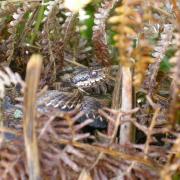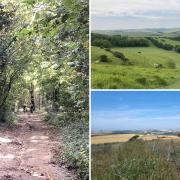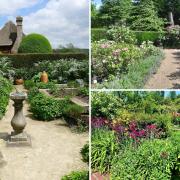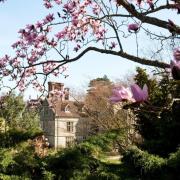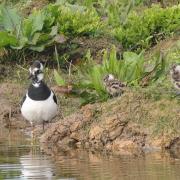The National Trust is gearing up for a special anniversary at the Seven Sisters. Help them celebrate with a guided walk and learn about climate change and coastal processes. Words by Emma Ward
The National Trust looks after over 700 miles of coastline in England, Wales and Northern Ireland, representing nearly 10 per cent of the total mileage. Some of the country’s most beautiful landmarks, both man-made and naturally occurring fall into this area, not least in Sussex, where sites such as the dramatic Seven Sisters cliffs in East Sussex and the sand dunes of East Head’s beach in West Sussex are in the National Trust’s care.The National Trust’s coastal wardens have a large, but fascinating remit to protect ever-changing shorelines and to manage the natural changes brought about by coastal processes, sea level rise and climate change. The white cliffs of the Seven Sisters, for example, are being continuously eroded by the sea. Other responsibilities include caring for the surrounding areas, such as the nearby downland habitat, which sustains several rare species of plants like dropwort, plus globally threatened birds, such as the melodious skylark.At the same time, the National Trust is encouraging visitors to the area through activities, events and information about the area and its wildlife. At Crowlink on the Seven Sisters, Warden Adrian Harrison is gearing up for a special anniversary and is keen to involve the public as much as possible. “This year marks 80 years since the National Trust took ownership of our first part of Crowlink,” he explains. “We are celebrating this special milestone with a guided walk and brand new information boards that will help visitors and locals understand how and why we have dealt with the issues of climate change and coastal processes in the area in the way we have over the past 80 years.”
East HeadA few miles further along the coastline in West Sussex, similar issues are facing the team at East Head; the sand and shingle spit at the entrance to Chichester Harbour. Here, the wardens are in charge of exceptionally rare habitats, including several sand dunes. These dunes are home to several rare species, such as the silver spinney digger wasp, sand lizards and 250 nesting pairs of skylarks during the spring. There are also beautiful maritime plants including scarlet pimpernel, common century and birdsfoot trefoil.Other important habitats are vegetated shingle and the salt marsh. Vegetated shingle supports an ecosystem that includes the nesting ringed plover and plants such as sea holly and yellow horned poppy. The salt marsh is home in winter to migrant wildfowl, such as 4,500 black bellied brent geese and sanderlings. Plants here include the rare lax-flowered sea lavender and glasswort, the ashes of which were once used in glass-making.East Head Warden, Andrew Lawrence is aware of the importance of managing these habitats for the benefit of resident wildlife and the enjoyment of visitors, particularly at this time of year. “Summer is the ideal time to visit the beach, and where better than East Head, right here in Sussex? The sand is soft underfoot, and the views out to sea spectacular. We are working hard to keep the area at its very best for visitors and wildlife alike, while teaming up with other environmental, local and heritage organisations to ensure we work alongside, rather than battle against the naturally occurring processes and shifting shoreline caused by deposition and the tides.”East Head is considered one of the best beaches in West Sussex, although safe bathing is limited. It is heavily visited by the sailing community, with the northern tip proving a popular temporary anchorage point.It is easily accessible from Chichester and West Wittering. Successful long-term management of its landscape is crucial to the area’s future.



